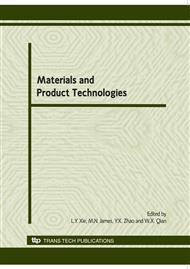p.670
p.675
p.681
p.686
p.691
p.697
p.707
p.712
p.717
Twice-Modeling Approach for Concurrent Process Planning without Forced Decoupling
Abstract:
A strategy other than forced decoupling or tearing to solve the problem in concurrent design process planning is produced. Twice-modeling concept is proposed by building an Information Flow Matrix (IFM) based on the influence of relationships between information flows during task execution. After re-constructing the IFM to determine the order levels of information flows, the provider-receiver relationship between tasks and information flows are used to instruct the planning of the key tasks. A design task is then decomposed according to the usage or supply of information flow. Adaptive subdivision of design tasks is realized based on synchronous mapping of Coded Design Structure Matrix (C-DSM) and IFM. Finally the whole design process planning is completed by the priority definition of the subtasks and a DSM based level generate algorithm. The proposed method is illustrated by an application to the vehicle overall design process planning. The “pseudo coupled” or “pseudo dependent” relationships are eliminated effectively without forced decoupling and the concurrency of the whole design process is improved obviously.
Info:
Periodical:
Pages:
691-696
Citation:
Online since:
June 2010
Authors:
Keywords:
Price:
Сopyright:
© 2010 Trans Tech Publications Ltd. All Rights Reserved
Share:
Citation:


